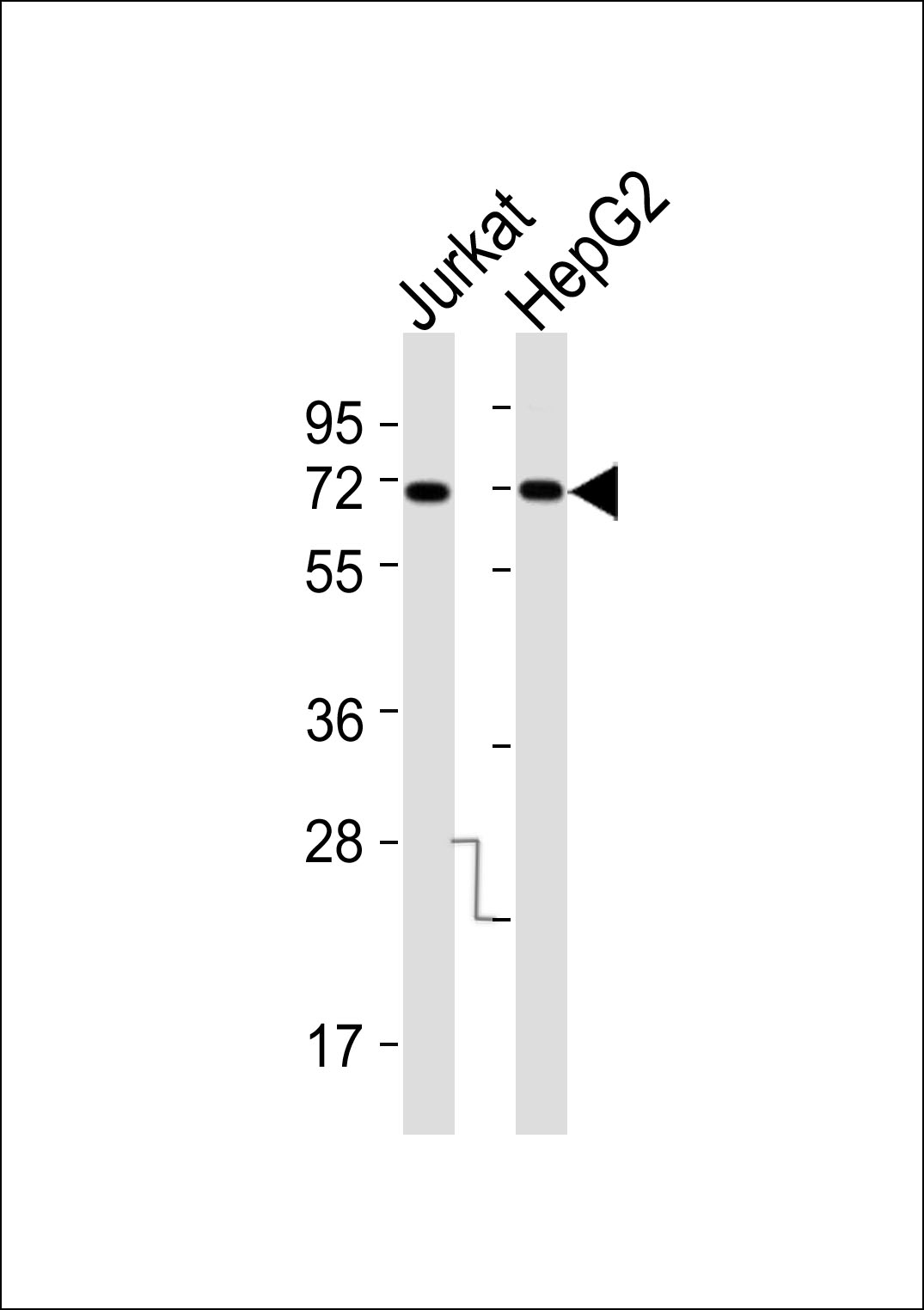Kv3.1 Antibody
Purified Rabbit Polyclonal Antibody (Pab)
- SPECIFICATION
- CITATIONS
- PROTOCOLS
- BACKGROUND

Application
| WB |
|---|---|
| Primary Accession | P48547 |
| Reactivity | Human, Mouse, Rat |
| Host | Rabbit |
| Clonality | Polyclonal |
| Calculated MW | 58 KDa |
| Antigen Region | 191 - 250 aa |
| Gene ID | 3746 |
|---|---|
| Other Names | Potassium voltage-gated channel subfamily C member 1, NGK2, Voltage-gated potassium channel subunit Kv31, Voltage-gated potassium channel subunit Kv4, KCNC1 |
| Target/Specificity | KLH-conjugated synthetic peptide encompassing a sequence within the center region of human Kv3.1. The exact sequence is proprietary. |
| Dilution | WB~~ 1:1000 |
| Format | 0.01M PBS, pH 7.2, 0.09% (W/V) Sodium azide, Glycerol 50% |
| Storage | Store at -20 °C.Stable for 12 months from date of receipt |
| Name | KCNC1 {ECO:0000303|PubMed:8449507, ECO:0000312|HGNC:HGNC:6233} |
|---|---|
| Function | Voltage-gated potassium channel that opens in response to the voltage difference across the membrane and through which potassium ions pass in accordance with their electrochemical gradient (PubMed:25401298, PubMed:35840580). The mechanism is time-dependent and inactivation is slow (By similarity). Plays an important role in the rapid repolarization of fast-firing brain neurons (By similarity). Can form functional homotetrameric channels and heterotetrameric channels that contain variable proportions of KCNC2, and possibly other family members as well (By similarity). Contributes to fire sustained trains of very brief action potentials at high frequency in pallidal neurons (By similarity). |
| Cellular Location | Cell membrane; Multi-pass membrane protein. Cell projection, axon {ECO:0000250|UniProtKB:P25122}. Presynaptic cell membrane {ECO:0000250|UniProtKB:P25122}. Note=Localizes in parallel fiber membranes, distributed on the perisynaptic and extrasynaptic membranes away from the active zones. {ECO:0000250|UniProtKB:P25122} |

Thousands of laboratories across the world have published research that depended on the performance of antibodies from Abcepta to advance their research. Check out links to articles that cite our products in major peer-reviewed journals, organized by research category.
info@abcepta.com, and receive a free "I Love Antibodies" mug.
Provided below are standard protocols that you may find useful for product applications.
Background
Mediates the voltage-dependent potassium ion permeability of excitable membranes. Assuming opened or closed conformations in response to the voltage difference across the membrane, the protein forms a potassium-selective channel through which potassium ions may pass in accordance with their electrochemical gradient.
References
Ried T.,et al.Genomics 15:405-411(1993).
Grissmer S.,et al.J. Biol. Chem. 267:20971-20979(1992).
If you have used an Abcepta product and would like to share how it has performed, please click on the "Submit Review" button and provide the requested information. Our staff will examine and post your review and contact you if needed.
If you have any additional inquiries please email technical services at tech@abcepta.com.













 Foundational characteristics of cancer include proliferation, angiogenesis, migration, evasion of apoptosis, and cellular immortality. Find key markers for these cellular processes and antibodies to detect them.
Foundational characteristics of cancer include proliferation, angiogenesis, migration, evasion of apoptosis, and cellular immortality. Find key markers for these cellular processes and antibodies to detect them. The SUMOplot™ Analysis Program predicts and scores sumoylation sites in your protein. SUMOylation is a post-translational modification involved in various cellular processes, such as nuclear-cytosolic transport, transcriptional regulation, apoptosis, protein stability, response to stress, and progression through the cell cycle.
The SUMOplot™ Analysis Program predicts and scores sumoylation sites in your protein. SUMOylation is a post-translational modification involved in various cellular processes, such as nuclear-cytosolic transport, transcriptional regulation, apoptosis, protein stability, response to stress, and progression through the cell cycle. The Autophagy Receptor Motif Plotter predicts and scores autophagy receptor binding sites in your protein. Identifying proteins connected to this pathway is critical to understanding the role of autophagy in physiological as well as pathological processes such as development, differentiation, neurodegenerative diseases, stress, infection, and cancer.
The Autophagy Receptor Motif Plotter predicts and scores autophagy receptor binding sites in your protein. Identifying proteins connected to this pathway is critical to understanding the role of autophagy in physiological as well as pathological processes such as development, differentiation, neurodegenerative diseases, stress, infection, and cancer.


